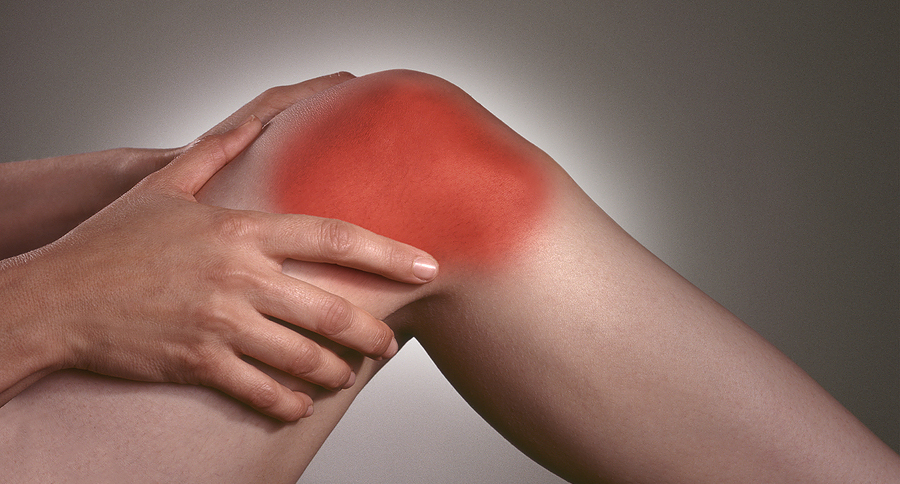
Almost everyone deals with a minor fracture or sprain at some point. A slip on icy pavement, a fall that results in a twisted ankle, or any other trivial accident is a normal part of life. Most of us experience some moderate pain, ice the injury, take some ibuprofen, and expect a full recovery within a couple of days. But for a smaller group of people who have Complex Regional Pain Syndrome (CRPS), a minor injury like this can become a life-altering experience that plunges them into the depths of pain and despair. If you are one of those unfortunate enough to be effected by CRPS, then you may want to contact a legal representative such as GJEL. GJEL has a strong record helping CRPS clients, and may be able to help you.
Professional ballerina, Cynthia Toussaint was a guest on my show, Aches and Gains. She shares a riveting account of how a minor thigh injury resulted in a complete life transformation due to the development of Complex Regional Pain Syndrome, recounts her treatment options, and then details how she overcame her pain.
CRPS Type I and Type II
There are two types of CRPS. A person with CRPS Type I (formerly known as reflex sympathetic dystrophy, or RSD) or Type II often experiences an acute injury which leads to spontaneous pain far out of proportion to the original trauma. For instance, a CRPS Type I scenario might involve having surgery on your big toe, which becomes painful to the touch, red, swollen, and hard to move. Four months after the surgery, instead of resolving, the symptoms have expanded to involve the entire foot. In an instance like this, we can’t pinpoint an exact nerve that was injured.
In CRPS Type II (also known as causalgia), patients show evidence of a specific nerve injury (typically revealed by nerve conduction testing) such as the ulnar nerve (funny bone), but they report pain that extends beyond the territory of the injured nerve. The clinical features are the same for both subtypes of CRPS; we see the symptoms expand beyond the confines of the injury in both situations. Studies indicate that CRPS is three to four times more common in women than in men, and there are at least 50,000 new cases of CRPS-I occurring annually in the United States.
A frequent question that arises is when does CRPS develop? Based on the mechanisms involved and research on fracture patients, it seems that CRPS typically develops during a three to four month period after the initial injury. Patients of mine also want to know whether CRPS will spread to other limbs. While spread is not universal, 48% of patients in one study described spreading of symptoms to another limb. Spreading symptoms of CRPS can be contiguous – expanding beyond the injured area to nearby areas (for example, it starts in the big toe and travels up to the thigh); mirror image – manifesting in the opposite extremity (it starts in the right arm and then presents in the left arm); or independent – moving diagonally across the body (it starts in the right arm and then presents in the left leg).
CRPS is typically associated with two presentations—warm and cold. Warm CRPS patients exhibit a warm, red, swollen limb, while cold CRPS patients display a cool, dusky, sweaty limb. Some research suggests that CRPS is more likely to resolve within a year if it presents as warm and red upon initial diagnosis. On the other hand, patients with cold, dusky CRPS often do not see resolution this quickly.
Symptoms of CRPS
CRPS is characterized by intense, excruciating (aching, burning, shooting, stabbing) pain usually in one extremity or part of an extremity. Other common CRPS symptoms may include excessive sweating and changes in the color of the skin, temperature changes, dryness, swelling or shininess of the skin in the affected region. Similar to other chronic pain conditions, patients with CRPS often experience depression, and anxiety, but fear, disuse of the painful body part, and social withdrawal can be more prevalent. The emotional toll cannot be overemphasized.
One CRPS patient of mine had to wear an oven mitt over her hand to protect it from coming into contact with anything, even the wind. I’ve also seen patients with an affected leg or arm that is half the size of the normal limb because of atrophy. Other patients describe a bed sheet touching their painful limb being akin to 50 sharp knives stabbing them. Unfortunately, if CPRS continues, the body may lose the ability to “turn off” the pain.
Diagnosing Complex Regional Pain Syndrome
Because no definitive test exists for CRPS, doctors must rule out other diseases that might share similar symptoms, including thoracic outlet syndrome, discogenic disease, deep vein thrombosis, cellulitis (skin infection), and various disorders of the circulatory and lymphatic systems. Most importantly, the diagnosis is made by a thorough clinical evaluation of symptoms and signs. The “Budapest Criteria” are considered the standard means of diagnosing the condition and were adopted as such by the International Association for the Study of Pain (IASP) in 2012.
Pain specialists look for patients to report at least one symptom in three of the four categories listed below, and to display one sign in two or more categories:
- – Sensory: Increased sensitivity to a sensory stimulation (hyperesthesia); evidence of hyperalgesia (exaggerated response to something painful like a needle) or allodynia (pain from something that shouldn’t cause discomfort such as clothing)
- – Vasomotor: Temperature asymmetry or skin color changes
- – Sudomotor/edema: Edema (swelling) or sweating changes
- – Motor/trophic: Decreased range of motion or weakness, tremor, dystonia (continual muscle contraction) or trophic changes (hair, nail, skin changes)
Treating Complex Regional Pain Syndrome
Treatment for complex regional pain syndrome (CRPS) should take into account not just the physical symptoms but also the emotional distress most patients experience. This means that an effective approach should include cognitive behavioral therapy (CBT) to improve coping and minimize the impact of the condition. Functional restoration appears to be the most important means of ensuring that patients don’t lose function of their extremity. This often entails physical therapy aimed at normalizing movement, and desensitization strategies that reduce skin sensitivity. Because CRPS lacks precise diagnostic criteria, it has been omitted from many medication studies on neuropathic pain.
Yet, multiple medications are currently used to ease the pain of CRPS. Topical medicines such as 5% lidocaine patch, EMLA cream (local anesthetic mixture), and dimethyl sulfoxide (DMSO) have demonstrated relief, especially for skin sensitivity. Topical ketamine also shows promise in dampening this skin sensitivity. A class of drugs called the bisphosphonates or calcitonin have been found to lower pain, reduce inflammation, and improve range of motion. They aren’t used very often, though.
Injection therapies such as sympathetic nerve blocks can help patients tolerate physical therapy by controlling pain. Several studies indicate that spinal cord stimulation (SCS) helps reduce pain in patients with CRPS. In fact, both the National Institute of Clinical Excellence and British Pain Society support the use of SCS for CRPS and other neuropathic pain conditions. Some patients benefit from auricular (ear) acupuncture, or outpatient intravenous ketamine therapy too. Even more novel treatments such as oral naltrexone or botulinum toxin (Botox) may improve symptoms based on preliminary studies.
Prevention
If you have CRPS and need surgery, try to postpone it until the signs and symptoms are minimal. If you can’t, then it may make sense to consider a regional anesthetic technique (epidural, for example), sympathetic block, or daily subcutaneous injection of salmon calcitonin from the time of surgery until four weeks later. Studies point to the beneficial effects of these strategies in offering some protection against relapse.
There is more detailed information on CRPS and many other pain conditions in my book, Aches and Gains: A Comprehensive Guide to Overcoming Your Pain.
